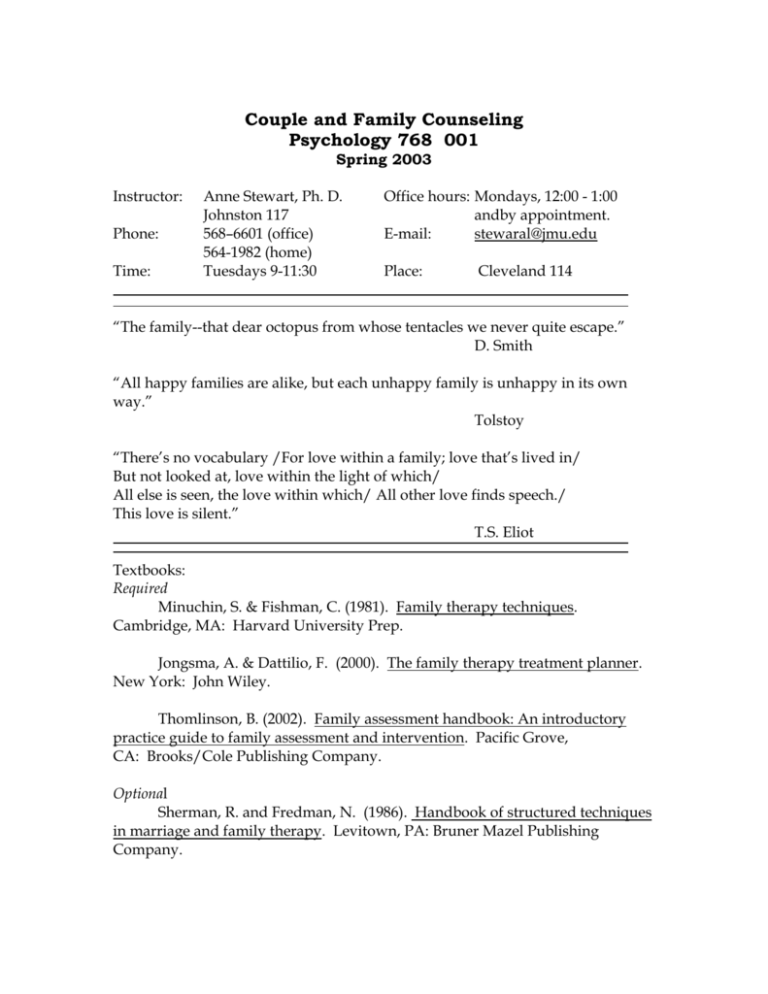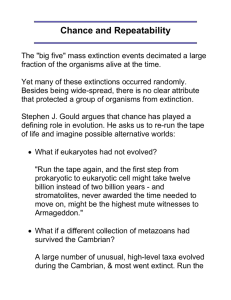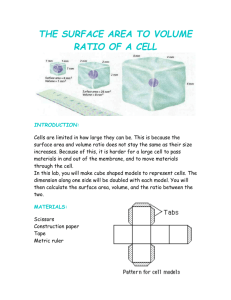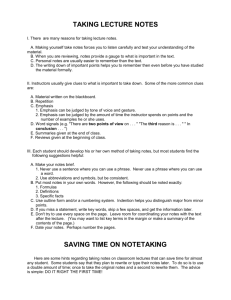Couples Therapy - American Psychological Association
advertisement

Couple and Family Counseling Psychology 768 001 Spring 2003 Instructor: Phone: Time: Anne Stewart, Ph. D. Johnston 117 568–6601 (office) 564-1982 (home) Tuesdays 9-11:30 Office hours: Mondays, 12:00 - 1:00 andby appointment. E-mail: stewaral@jmu.edu Place: Cleveland 114 “The family--that dear octopus from whose tentacles we never quite escape.” D. Smith “All happy families are alike, but each unhappy family is unhappy in its own way.” Tolstoy “There’s no vocabulary /For love within a family; love that’s lived in/ But not looked at, love within the light of which/ All else is seen, the love within which/ All other love finds speech./ This love is silent.” T.S. Eliot Textbooks: Required Minuchin, S. & Fishman, C. (1981). Family therapy techniques. Cambridge, MA: Harvard University Prep. Jongsma, A. & Dattilio, F. (2000). The family therapy treatment planner. New York: John Wiley. Thomlinson, B. (2002). Family assessment handbook: An introductory practice guide to family assessment and intervention. Pacific Grove, CA: Brooks/Cole Publishing Company. Optional Sherman, R. and Fredman, N. (1986). Handbook of structured techniques in marriage and family therapy. Levitown, PA: Bruner Mazel Publishing Company. Worden, M. (1998). Family therapy basics, 3rd edition. Pacific Grove, CA: Brooks/Cole Publishing Company. (Also used for PSYC 668) Course Description: This graduate level course is designed to provide students with an introduction to conducting couple and family therapy. The primary objective of the class is to assist the beginning clinician in translating theories into action. At the completion of this course the student should be able to: *formulate hypotheses about couple and family structure and process *compose goals for couple and family therapy *identify problematic patterns of interaction and communication in families and couples *design and practice therapeutic, systemic interventions with individuals, couples, or families *provide meaningful feedback to therapy team members *identify and respond to culturally sensitive issues *identify and respond appropriately to ethical issues in treatment. To accomplish these objectives the format of the class will combine lecture, discussion, and experiential activities. Students are expected to complete the assigned readings or activities prior to each class and to contribute to class discussions in an informed manner. Course Requirements: The requirements for the class include: 1. Class attendance and participation. 2. Therapy team participation. You are to participate as a member of therapy team and observe your team member(s) conducting couple or family therapy. Team members are expected to provide feedback about the progress of the case to the primary therapist(s). Students are expected to conduct/observe therapy sessions at the Human Development Center/CAPS. Maintain a record of your observations using the Family Systems Team observation form. (If you are unable to observe a session directly, you may observe videotapes, prepare written feedback, and share it with the therapist(s). You may use the information on pages 84-85 and 110-111 in the Thomlison handbook as a guide to analyze the family interactions.) Submit your forms with a cover sheet listing the sessions observed at the end of each month. (20%) 3. Videotape of counseling. You will submit 2 videotapes for class presentation and peer review. The videotapes (at least 30 minutes in length) are to show you conducting a couple or family therapy session. The session may be done with a co–therapist and the clients should be from a clinical setting. A written analysis of each videotape segment will also be submitted (5 pages). The analysis should provide a: brief discussion of the relevant background information for the client/couple/family; 3–generation genogram (e.g., children, parents, grandparents); circular/contextual description of the system’s interactions (Do NOT submit a linear/blaming description. I suggest you use the McGoldrick Carter diagram showing reciprocal ecosystemic influences, vertical and horizontal stressors, and life cycle stage to illustrate relevant influences and describe the family’s patterns of interaction.); listing of the hypotheses you are exploring; multi-axial diagnosis (DSM-IV); goals for therapy (I suggest you consult the Jongsma and Dattilio text); description of the strategies and techniques you employed and a theory-based rationale for the interventions you conducted. (You may also consult the Family Assessment Report, pages 84-85 in Thomlison as a guide.) Please include a transcription of 10 minutes of the tape for more in-depth analysis. For your class presentation you are encouraged to use the above outline to introduce the class to your clients and the major emphases of your work together. Use the class to practice your conceptualization/reporting skills and to explore questions you have generated about the work you are doing. For example, you may want to use the class to sculpt, do a family art activity, or examine the family from a different theoretical orientation. (Select a total of no more than 10 minutes of videotape.) Plan on 30 minutes to one hour for your presentation. (30%) 3. "Self in the system" writing assignments. You will complete three brief (about 3 pages each) writing assignments. The topic of these papers is you. First, please take some time to re-introduce your family to me in relation to your goals for this class (remember, I have had a previous introduction). The second paper should be a "progress report" of sorts, i.e., are you meeting your goals (of course, they may have changed), what have you learned about yourself as a couple or family counselor? In the last paper, please review your progress and imagine yourself in 5 years. How will you be using this information and the experiences? What will you be doing? (10%) 4. Topical presentation. Please collaborate with a classmate to conduct a topical presentation for the class. Topics will be discussed and assigned in class and may be related to the clients you are working with or simply a topic of interest to you. You are expected to include and summarize relevant work from both research and clinical couple and family systems literature. Create a handout for the class that includes: a definition/description of the topic key constructs recommended systemic techniques an annotated reference and resources for clients list. (Sample write ups will be distributed in class.) (10%) 5. Videotape presentation of technique (You may do this activity with a partner.). Please select a videotape of particular theoretical approach, issue, or problem to review from the collection at Carrier library or from Anne. View the tape and prepare a brief description of the theory and technique and an outline of the video content to distribute to the class (1-2 pages). Select a segment of the tape (not more than 10 minutes) to show in class that demonstrates a therapeutic technique. In your class presentation (45 minutes) introduce the technique and show the tape provide some practice/experience with the technique for the class critique the use of the technique. (10%) 6. Final exam. The format of the final examination will be experiential. Small groups will be formed and you will be asked analyze and role play a family therapy session. You will discuss your conceptualization of the case and the intervention with each other and the instructor. The final exam will be help at our regular class time during finals week. (20%) Each requirement contributes toward the course grade. Students are expected to conduct their class activities in adherence with the JMU Honor Code. DATE January 14 TOPIC Introduction. Thoughts about therapy, systems, and families. Will you, want you, Will you, want you, Will you join the dance? -Carroll, 1865 January 21 Families, holons, and cuadros: Understanding the family's paradigm. Minuchin Chapter 1 Spontaneity Chapter 2 Families Chapter 6 Reframing Chapter 14 Realities Waters, D. (1992). Family therapy as an excellent adventure. Family therapy networker, September/October, 38-45. Theory/technique Tape Presentation _______________________ *1st paper due––Family and Goals January 28 Joining and Hypothesizing Minuchin Chapter 3 Chapter 4 Thomlison Joining Planning Chapter 1 Context of helping families Chapter 2 Getting started Chapter 3 The family system Chapter 4 Family assessment-construct an ecomap or social network map and grid for your family of origin and bring it to class Theory/technique Tape Presentation _______________________ February 4 Methods of Family Assessment & Engagement: Minuchin Chapter 7 Enactment Gil, E. (2000). Use of play techniques in the assessment and treatment of families. Handout from Association for Play Therapy Conference, New Orleans. Waters, D. & Lawrence, E. (1993). Creating a therapeutic vision. Family therapy networker. November/December, 52–58. Thomlison Chapter 5 Chapter 6 Family interventions Measuring and evaluating family change Theory/technique Tape Presentation_______________________ February 11 More Methods of Family Assessment & Engagement Johnson, S. & Whiffen, V. (1999). Made to measure: Adapting emotionally focused couple therapy to partners’ attachment styles. Clinical psychology: Science and practice, 6, 4, 368-381. Duncan, B. & Rock, J. (1993). Saving relationships: The power of the unpredictable. Psychology today, 86, 94, 46-51. Dahlheimer, D. & Feigal, J. (1991). Bridging the gap. Family therapy networker. January/February, 44–53. Laszloffy, T. & Hardy, K. (2000). Uncommon strategies for a common problem: Addressing racism in family therapy. Family process, 39, 1, pp. 35-49. Greene, B. (1995). African American families: A legacy of vulnerability and resilience. National forum, 75, 3, 29-32. Thomlison Chapter 7 Examining your own family experience (You may select activities to complete.) (Optional) Boyd–Franklin, N. (1987). The contribution of family therapy models to the treatment of black families. Psychotherapy, 24, 621–629. (Optional) Guerin, P., Fay L., Burden, S. & Kautto, J. (1987). The marital dyad: A theoretical overview. In P. Guerin, L. Fay, S. Burden & J. Kautto, The evaluation and treatment of marital conflict. New York, NY: Basic Books, 33–61. (Optional) Hayden, L., Schiller, M. Dinkstein, S., Seifer, R., Sameroff, A., Miller, I., Keitner, G., & Rasmussen, S. (1998). Levels of family assessment: I. Family, marital, and parentchild interaction. Journal of family psychology, 12, 1, 7-22. Theory/technique Tape Presentation _______________________ February 18 Even more Methods of Family Assessment & Engagement Imber-Black, E. & Roberts, J. (2000). Rituals for our times. Annual editions: Marriage and family. Guilford, CT: Dushkin Publishing. Tomm, K. (1987b). Interventive interviewing: I. Reflective questioning as a means to enable self–healing. Family process 26, pp. 167–183. Minuchin, S. (1998). Where is the family in narrative family therapy? Journal of marital and family therapy, 24, 4, 397403. Combs, G. & Freedman, J. (1998). Tellings and retellings. Journal of marital and family therapy, 24, 4, 404-408. Tomm, K. (1998). A question of perspective. Journal of marital and family therapy, 24, 4, 409-413. (OPTIONAL) Tomm, K. (1988). Interventive Interviewing: III. Intending to ask lineal, circular, strategic or reflexive questions. Family Process 27, 1–15. Theory/technique Tape Presentation _______________________ February 25 Dancing with the Family: Process & Structural Interventions Minuchin Chapter 8 Focus Thomlison Chapter 8 -11 Case studies, read over by end of term *1st VIDEOTAPE DUE Tape Presentation _______________________ Tape Presentation _______________________ Tape Presentation _______________________ March 4 Tape Presentation _______________________ Tape Presentation _______________________ Tape Presentation _______________________ March 10-14 SPRING BREAK––ENJOY! March 18 Dancing with the Family: Process & Structural Interventions Minuchin Chapter 17 Strengths Andreas S. (1992). Embedding the message. Family therapy networker, May/June. Eron, J. & Lund, T. (1989). From magic to method. Family therapy networker, Jan/Feb. *2nd Paper due––Progress Report March 25 Dancing with the Family: Process & Structural Interventions Minuchin Chapter 9 Intensity Chapter 10 Restructuring Chapter 15 Constructions April 1 Dancing with the Family: Process & Structural Interventions Minuchin Chapter 11 Boundaries Minuchin Chapter 12 Unbalancing Chapter 13 Complementarity April 8 Dancing with the Family: Process & Structural Intervention Tape Presentation _______________________ Tape Presentation _______________________ *2nd VIDEOTAPE DUE April 15 Tape Presentation _______________________ Tape Presentation _______________________ April 22 Tape Presentation _______________________ Tape Presentation _______________________ April 29 Ending the Dance: Termination Altman, H. (1997). Family systems therapy: Meeting the challenge of managed care. In R. Alperin & D. Phillips, The impact of managed care on the practice of psychotherapy (121-143). NY, NY: Brunner/Mazel Publishers. *3rd paper due––A look at the Future May 6 Final Examination Optional readings are available from Anne. Family Systems Team Observation Form Client initials ____________________ Session # ________ Date _________ Team members _________________________________________________ Client members present ___________________________________________ Contact before session ____________________________________________ Team preparation Hypotheses ______________________________________________________________ ______________________________________________________________ Directions/ requests for team members ______________________________________________________________ ______________________________________________________________ Plan of session ______________________________________________________________ ______________________________________________________________ ______________________________________________________________ ______________________________________________________________ ______________________________________________________________ Treatment Goals ______________________________________________________________ ______________________________________________________________ ______________________________________________________________ ______________________________________________________________ Session Opening statement/presentation of family Significant information/change reported Language/themes ______________________________________________________________ ______________________________________________________________ Progress of session ______________________________________________________________ ______________________________________________________________ Team suggestions ______________________________________________________________ ______________________________________________________________ ______________________________________________________________ ______________________________________________________________ Closing statements/homework ______________________________________________________________ ______________________________________________________________ Questions for supervision ______________________________________________________________ ______________________________________________________________ ______________________________________________________________ ______________________________________________________________









